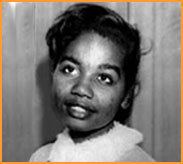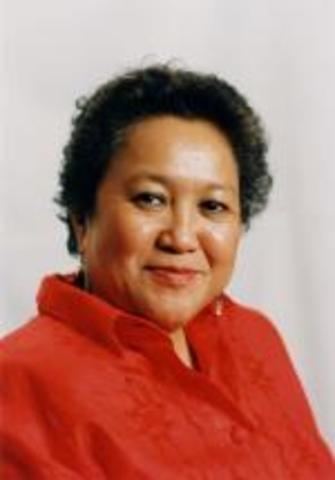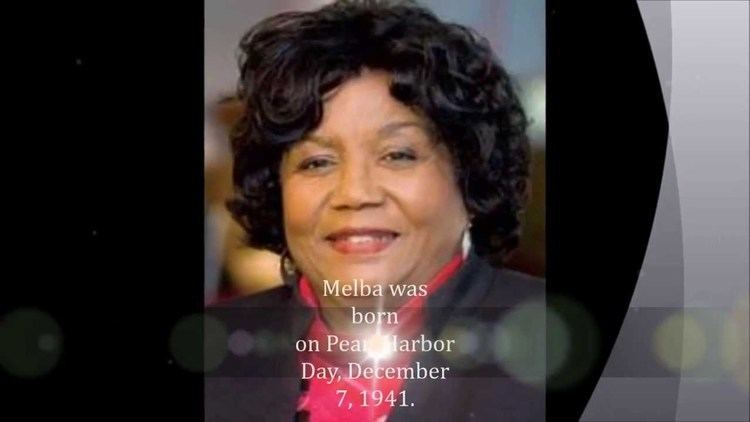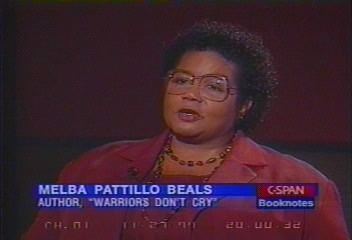Name Melba Beals Role Journalist | Spouse John Beals (m. 1961–1971) | |
 | ||
Full Name Melba Joy Pattillo Born December 7, 1941 (age 84) ( 1941-12-07 ) Alma mater Columbia UniversitySan Francisco State University Books Warriors Don't Cry, White is a state of mind, Expose yourself Similar People Ernest Green, Minnijean Brown‑Trickey, Carlotta Walls LaNier, Elizabeth Eckford, Thelma Mothershed‑Wair | ||
Melba pattillo beals
Melba Joyner Pattillo Beals (née Pattillo; born December 7, 1941) is a journalist and member of the Little Rock Nine, a group of African-American students who were the first to integrate Central High in Little Rock, Arkansas.
Contents
- Melba pattillo beals
- Dr melba pattillo beals at ala 2009
- Early life
- Integrating Central High School
- Career
- References
Dr melba pattillo beals at ala 2009
Early life

Melba Pattillo Beals grew up in a family who all valued and knew the importance of education. Her mother, Lois Marie Pattillo, a PhD, was one of the first black graduates of the University of Arkansas in 1954 and was a middle school English teacher at the time of the Little Rock Nine integration of Central High School. Her father, Howell Pattillo, worked for the Missouri Pacific Railroad. Melba also has a brother, Conrad S. Pattillo (who would go on to serve as U.S. Marshal of the Eastern District of Arkansas during the Clinton Administration), and they all lived with her grandmother, India Peyton at the time of the crisis. While attending Horace Mann High School in Little Rock, an all-black high school, Melba was aware that she was not receiving the same quality education as her peers at Central High School. Pattillo then volunteered to transfer to the all-white Central High School with eight other black students from Horace Mann and Dunbar Junior High School in Little Rock, Arkansas. Melba was not aware at this time what she was up against. Volunteering for this cause meant putting herself at risk and in danger of others in the community and at school. In an interview with the San Francisco Examiner in 1997 Melba says, "Mostly what I think about when I think back is how sad for somebody (to go through that) when they're 15," "Because when you're 15 you want to be loved and accepted, and I just wasn't ready for the kind of response I would get coming to school". Beals recounted that the soldier assigned to protect her instructed her, “In order to get through this year, you will have to become a soldier. Never let your enemy know what you are feeling.” Beals took the soldier’s advice and endured what she could of the rest of the school year. She did not get to finish her school career there, because the governor, Orval Faubus closed all of the Little Rock schools the following year to block integration.
Integrating Central High School

Beals was 14 years old when in May 1956, she chose to go to Central High school, an all-white school. Two years later, she was enrolled as a student at Central High. White students and some parents spat at and mocked the integrating students. The nine black students also faced mobs that forced President Dwight D. Eisenhower to send in the 101st Airborne Division to protect their lives after the governor of Arkansas, Orval Faubus, used troops to block the Nine's entry to the school. At least one white student, a senior named Link, helped her avoid dangerous areas during the school day, and a few Central High students were benign and even slightly helpful, but for the most part, she and the other black students faced daily hostility and persecution. In her book Warriors Don't Cry, Beals described one extreme incident in which a segregationist student threw acid into her eyes, attempting to blind her. Beals wrote in Warriors Don't Cry that she planned on returning to Central High for the 1958–59 school year, but Governor Faubus shut down Little Rock's high schools that failed to resist integration, leading other school districts across the South to do the same. Not until August 1959 did Central High reopen on an integrated basis.
Career

To finish school, Beals moved to Santa Rosa, California, with help from the NAACP, living with foster parents Dr. George and his wife Carol McCabe and their four children while she completed her senior year at Montgomery High School. She then attended San Francisco State University, earning a bachelor's degree. At age seventeen she began writing for major newspapers and magazines. She later earned a master's degree in journalism from Columbia University. While in college, she met Matt Beals, who she later married, but then divorced after he left her and their daughter Kellie for over a year without contacting them. She has one daughter, Kellie (with Bells) and twin sons, Matthew and Evan, whom she adopted when she was 52 and they were 4.

Beals' book Warriors Don't Cry chronicles the events of 1957 during the Little Rock crisis, based partly on diaries she kept during that period. She also wrote White is a State of Mind, which begins where Warriors left off.
In 1959, the NAACP awarded the Spingarn Medal to Beals and to the other members of the Little Rock Nine, together with civil rights leader Daisy Bates, who had advised the group during their struggles at Central High. In 1999, she and the rest of the Nine were awarded the highest civilian honor, the Congressional Gold Medal. Only three hundred others have received this.
On May 22, 2009, she received her Doctoral Degree in Education at the University of San Francisco. The day marked USF's 150th annual commencement ceremony.
Today, Beals lives in the San Francisco Bay Area. She taught journalism at Dominican University of California, where she is the chair emeritus of the communications department.
